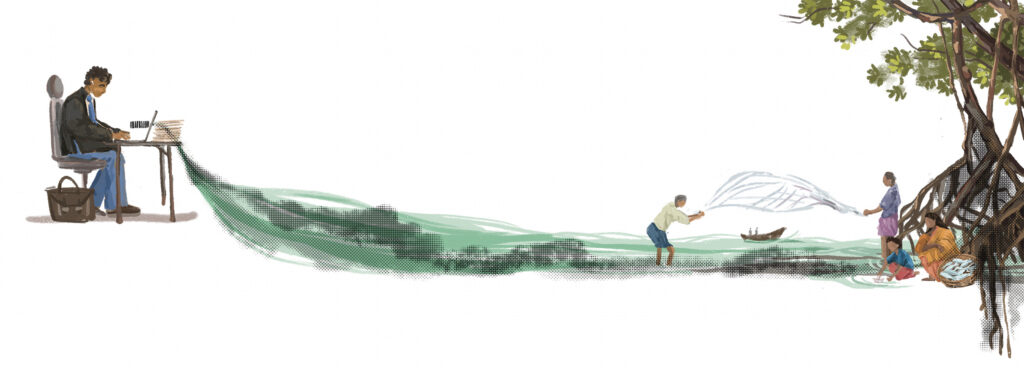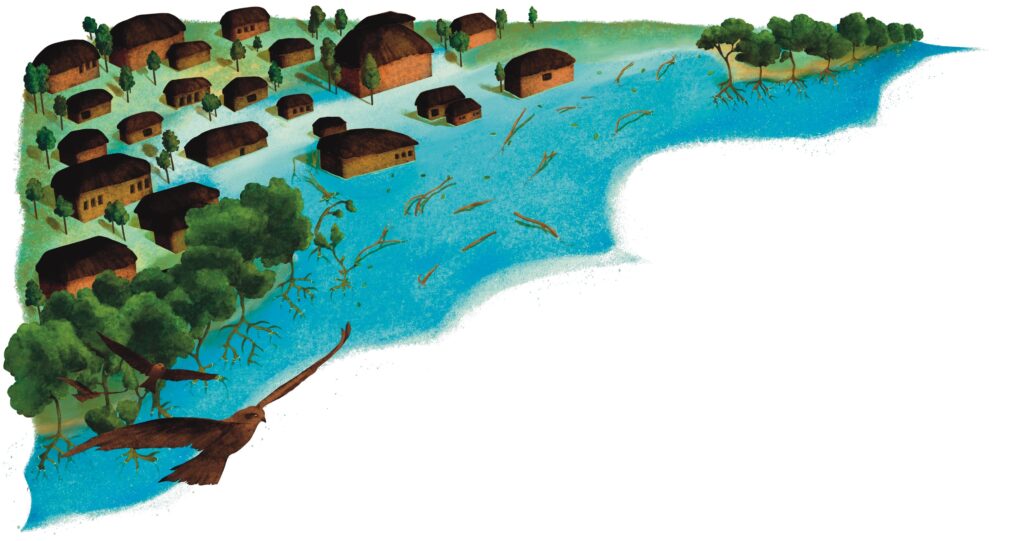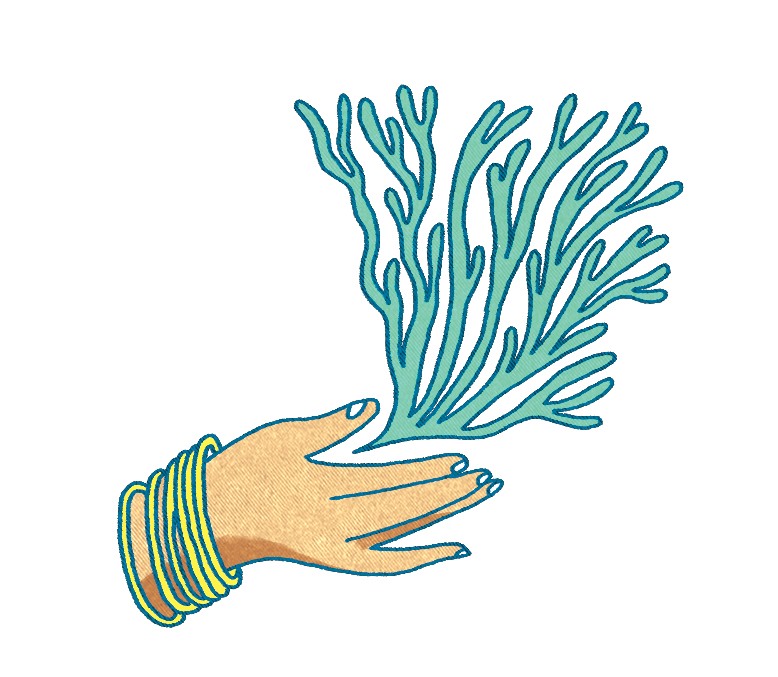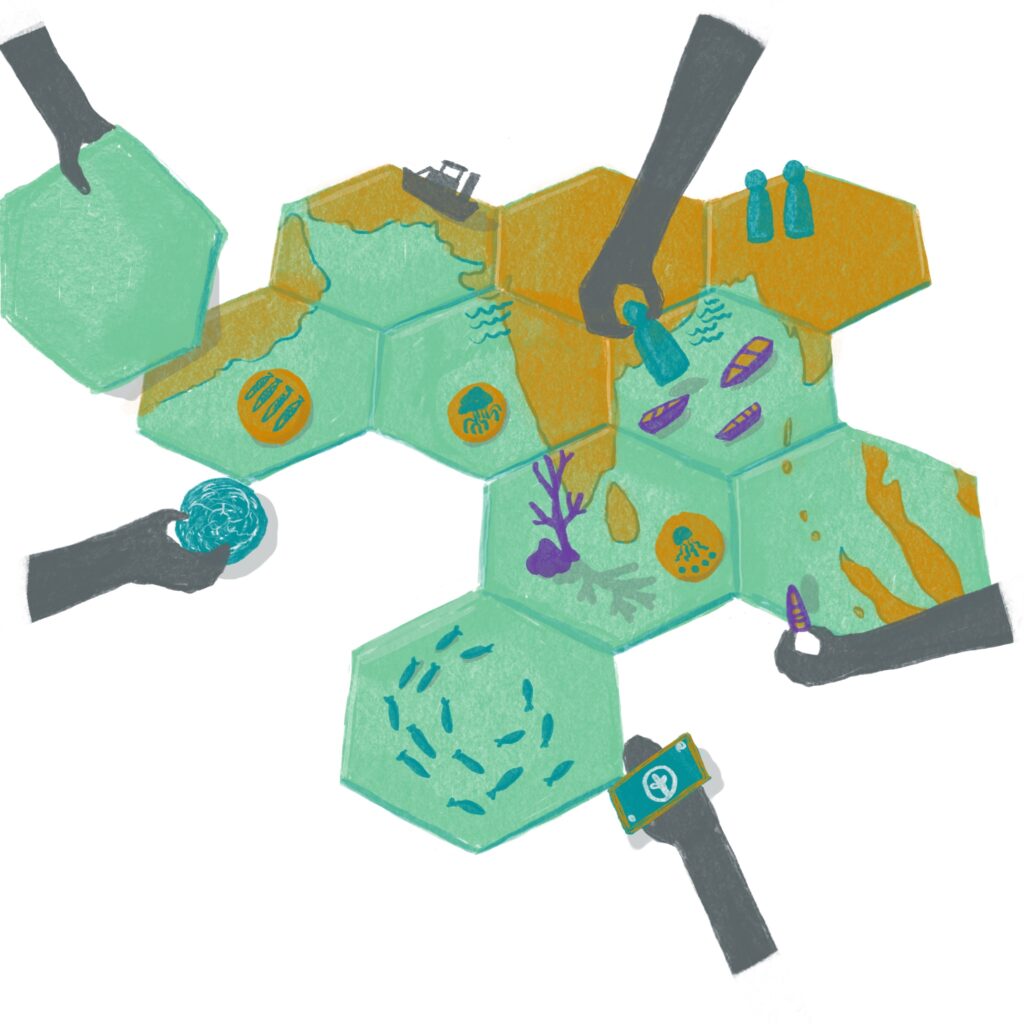Imagine that all roads leading to your friends are blocked. Where there were bridges, now lie empty spaces that risk death if you cross. Similarly, habitat loss is a reality for many species around the world. There’s no question that humans have a significant impact on habitats, but what does it mean for the future of the animals living in these habitats? Socially complex species, such as primates, feel the impact of human action in ways that scientists are just beginning to understand, including the impact these changes have on the evolutionary future of endemic species.
Primates serve numerous ecological roles in their habitats acting as both predator and prey, seed dispersers, and pollinators. Additionally, primates are of cultural and economic importance to humans. They draw in tourism and maintain the health of the forests for the people that depend directly on them. Yet, life in the forest comes with its own set of challenges for primates, many of which are directly caused by humans. This includes habitat loss, the pet trade, and climate change, which make it difficult for species to adapt, and thereby impacting their future.
Non-human primate species are found on three continents: South America, Asia, and Africa. To gain a comprehensive understanding of anthropogenic impacts on our taxonomic relatives, we are going to visit each continent.

South America:
Pied Tamarins and Black and Gold Howler Monkeys
Central and South America are home to a wonderful array of New World monkeys. In Brazil alone there are 110 monkey species. However, nearly 40 primate species in Brazil are facing extinction due to habitat loss. Much of the habitat fragmentation is caused by cities encroaching on the surrounding forests. One species facing this challenge is the pied tamarin, Sanguinus bicolor. These small primates live in and around Manaus, the capital city of the Brazilian state of Amazonas. Pied tamarins face not only habitat loss as the forest declines, but also struggle to reach other tamarin groups. Without access to other pied tamarin populations, the threat of losing genetic diversity by isolation is real. Genetic diversity is crucial for the future populations to adapt and evolve with their environment. One study investigates how fragmentation impacts the genetics of pied tamarins in the region surrounding Manaus by comparing hair samples from four different groups in the region. Urbanisation and human encroachment led to three of these areas being separated from the larger forest for years. The fourth site maintains access to the forest and acts as a control site for this study. This study determined that there is a significant threat to the pied tamarin gene pool in isolated communities, a threat that only increases with time. The combined effects of long-term population decline of pied tamarins and habitat fragmentation leads to an uncertain future for pied tamarins.

Black-and-gold howler monkeys (BGHM), Alouatta caraya, are another unique primate facing threats from man-made stressors in South America. They can be found in a vast range extending from Mexico to Argentina. With this wide range comes a lot of interactions with people. BGHMs live with deforestation from agriculture, flooding from dams, habitat fragmentation from urbanization, and zoonotic disease transmission. Like the pied tamarins, the changes in forest connectivity leads to group isolation impacting the potential gene pool. One known consequence of a smaller gene pool is a decrease in the population’s ability to adapt and fight off disease. This was seen recently as BGHM populations have drastically declined due to yellow fever outbreaks throughout their range.
In a study of ten BGHM groups, four distinct clusters of genetic populations were found. These four clusters are isolated from one another, similar to pied tamarins. This isolation leads to inbreeding within the groups, which in turn decreases the genetic diversity. One of the shocking conclusions from this study was that there could be a decrease in genetic diversity of nearly 25 percent in just 50 generations as a direct result of habitat fragmentation.

The New World monkeys are in a dire situation, but many groups are working to help them, such as the Chico Mendes Institute for Biodiversity Conservation (ICMBio). ICMBio works with the Brazilian government to establish protected areas for primates such as tamarins and compile research to better understand the threats and potential solutions to stop deforestation of the Amazon rainforest. As the human population in this area continues to grow the need for infrastructure and agricultural demand also increases. These groups are crucial for the development of corridors for the safe passage of these primates over roadways and other human infrastructure.
Africa
Chimpanzees
Africa is known for its diverse wildlife. Three of the four non-human great ape species, including chimpanzees, can be found in the western and central regions of Africa. Chimpanzees exhibit different behavioural adaptations between groups. These differences are so significant that there are now four recognized subspecies of chimpanzees, each occupying different habitats. To understand these subspecies scientists have examined distinct habitats that may have impacted the divergence of chimpanzees into different subspecies. The research found little geographic overlap between the territories and the habitats that each of these subspecies inhabit. As these habitats are lost due to deforestation or changed by factors such as climate change, it is unlikely that each subspecies will survive. In what seems to be a consistent theme, habitat fragmentation from logging, mining, and agriculture, along with the bushmeat trade, are the biggest threats to great apes in this region causing population declines for chimpanzees in this region.

In western Africa, the Goualougo Triangle Ape Project is combating these issues. They work with the Congolese government, local logging companies, and residents to promote sustainable forestry, research, and capacity building. With the cooperation of these groups, this project has been able to make a real difference in sustaining the great ape populations in the region.
Lemurs
The island of Madagascar is located off the southeastern coast of mainland Africa. This unique island has high endemicity, i.e. it is home to species that are found nowhere else in the world. Lemurs are a good example of this. As the human population on the island increases, the habitat available for other species is decreasing. It also creates an “edge effect”, which increases human-wildlife conflict, leading to increased risk of disease transmission. This combined with additional threats such as the bush meat and pet trades contribute to the decline of lemur populations on the island. As land availability decreases for native species, they become more scarce and the ability for lemur species to adapt and thrive ultimately decreases.

Organisations such as the Lemur Conservation Foundation (LCF) work hard both in Madagascar and abroad to educate the public and mitigate negative impacts on lemurs. Lemurs are known for their cute features, often leading to use as pets or tourist attractions. LCF works with local people to establish proper ecotourism infrastructure, while restoring lemur habitats. To decrease the local residents’ reliance on rainforest resources, various projects have been put in place to provide fuel-efficient stoves, decrease bushmeat usage, and encourage sustainable fishing techniques.
Asia
Macaques
From snowy mountains to the tropical islands of the Pacific, Old World monkeys in Asia reside in various habitats. In China, fossil records indicate that historically macaques were found throughout the mainland and islands, though they showed preference for lower elevations and rivers. The most telling piece from these fossils was found after analysing home range trends of monkeys in the last 300 years. As urbanisation increased macaques were no longer found in central China (Li et al., 2020). Macaques have now retreated to higher elevations in the mountains as opposed to the rivers.

Though human activity has certainly impacted the lives and distribution of these monkeys, they have proven to be very adaptable. In fact, macaques have found ways to be successful in urban landscapes. Food was found to be the most important factor in behavioural changes for macaques. For urban dwelling monkeys, human food has become an integral part of their diet. These adaptations and changes in behaviour have allowed these monkeys to keep their numbers higher than other primate species, and may help them as human development continues into the forests.
So what now?
As the world’s human population increases, there is continued encroachment on wild habitats. Human activity such as agriculture, logging, and mining, result in clear cutting forest habitats and increase fragmentation. But for primates, there are other man-made threats to consider as well—hunting, the pet trade, and disease as exposure to humans increases. In terms of evolutionary response, these threats often make it harder for species to adapt to the ever changing landscape. These changes are occurring at such a rate that many species are already seeing a rapid decline. In fact, 75 percent of primate species are facing population declines due to human activity. As humans and primates continue to share more space, human-primate conflict is bound to increase.
Though the news is dire for animals around the world, there are actions that we can take to mitigate the problem. First, we need to create long-term management plans. There is significant poverty in many areas where primates live. Finding ways to make money off of the land is crucial for the socio-economic wellbeing of the local community. Conservation without the support of the people living in these regions will be fruitless. Fortunately, there are a number of organisations working to help those that rely on these resources to use them in a sustainable way.
There are examples of such projects in every region where primates are found, but what about those of us that do not live in primate habitats—what can we do? One option is to decrease the global demand for the natural resources that primate habitats provide. Logging demands are often from paper products and furniture. Consumers can purchase products from manufacturers that supply their wood using sustainable sources. Certifications for this have become more common, making it easier to choose more eco-friendly options. One example is the Forest Stewardship Council (FSC) logo. This organisation works to promote sustainable and recycled materials for wood and paper-based products.
Other resources exploited from these habitats are minerals such as gold and coltan. These minerals are used in the production of new electronic devices. Refurbishing and properly recycling old electronics rather than purchasing products made with raw materials is another way that anyone can make a difference.
Finally, purchasing locally sourced meat and produce items can make a difference. Agriculture is the most prolific driver of habitat destruction, which includes ranching and palm oil plantations. Currently, the global demand for meat products results in forest encroachment and clear cutting to meet demand. According to the United States Department of Agriculture (USDA), Brazil is responsible for 20 percent of the world’s beef exports. Additionally, palm oil is found in numerous products from beauty supplies to snack foods. The slash-and-burn techniques used to clear the land for these monoculture plantations creates significant pressures on rainforests around the world, adding to the deforestation in the Amazon rainforest. To decrease the ecological impact of these practices, buying locally sourced meat products and purchasing products made with sustainable palm oil can make a substantial difference in the survival of primates in these habitats.
Every consumer has the power to help protect and save the environment. By making ecologically sustainable purchases, we tell companies that there is a market for environmentally friendly supply chains. By providing options for the sustainable management of primate habitats, we can reduce the impact that humans have on these ecosystems. If we can maintain or extend habitats and connections between populations, primates can have a greater chance of survival through increased genetic diversity.
Further reading:
Estrada, A., P. Garber, A. Rylands, C. Roos, E. Fernandez-Duque, A. Di Fiore, A. Nekaris, et al. 2017. Impending extinction crisis of the world’s primates: Why primates matter. Science Advances 3(1): e1600946. doi: 10.1126/sciadv.1600946.
Li, B., G. He, S. Guo, R. Hou, K. Huang, P. Zhang, H. Zhang et al. 2020. Macaques in China: Evolutionary dispersion and subsequent development. American Journal of Primatology 82(7): e23142. https://doi.org/10.1002/ajp.23142.






